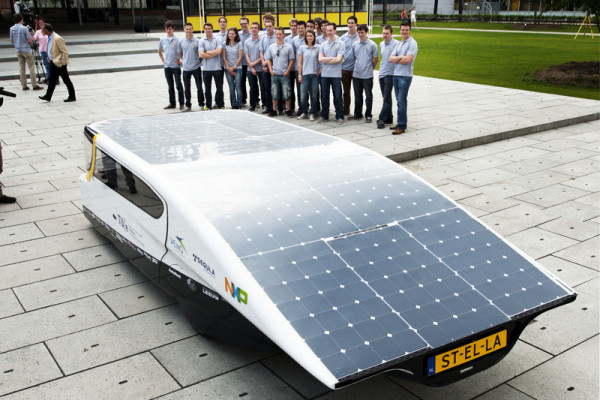Unveiling of vehicles for the upcoming World Solar Challenge – an 1,800-mile, week-long endurance contest across the continent of Australia that takes place every other fall and makes use of college built solar powered cars – looks to be kicking into full swing now. First there was word of the entry the University of Michigan would be making use of. Now the Eindhoven University of Technology has announced its choice, and it takes a unique spot as the world’s first solar-powered family car.

One thing you’ll quickly notice when you look at solar cars developed by universities is they don’t have a lot of room for people to sit in. The Solar Team Eindhoven (STE) team hopes to change that with Stella. Said to have room for four people and a trunk to hold luggage in, Stella has a range under solar power of 372.8 miles.
The car will be entered in what’s called the Cruiser class of the solar race, in which the emphasis lies on practical and user-friendly solar vehicles rather than on speed. It will make use of very efficient solar panels, and is described as an “energy positive” vehicle that generates more power than it needs. This excess power could be returned to the power grid to help offset the energy needs of others.
STE, thinking beyond the scope of this race, was looking to develop a car of the future. To this end, by
combining aerodynamic design with lightweight materials like carbon and aluminum, a very fuel-efficient car has been designed, which also has ingenious applications like a LED strip and touchscreen that make all the buttons and knobs we know today superfluous. Intuitive driving is enabled by a steering wheel that expands or contracts when you are driving too fast or too slowly. STE will have the car officially certified for road use to prove that this really is a fully-fledged car.
Eindhoven University of Technology is represented at the Challenge for the first time by STE, it said. A multidisciplinary team (with 22 students from six different TU/e departments) has spent a year on this project that involves “challenges from the fields of energy and mobility.” It also noted that cooperation with industry has given the students an opportunity to “become familiar with top-notch entrepreneurship.”